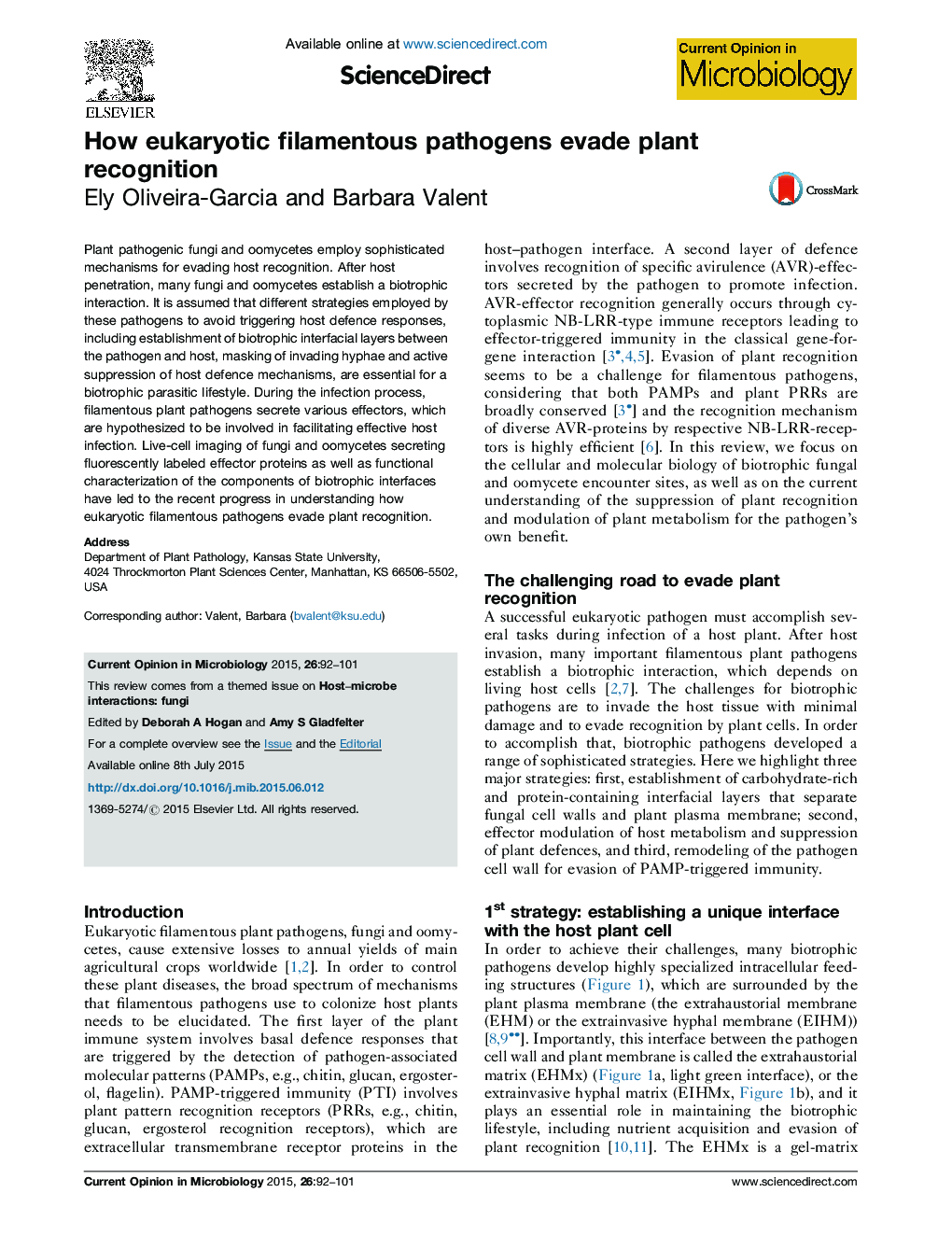| Article ID | Journal | Published Year | Pages | File Type |
|---|---|---|---|---|
| 3399023 | Current Opinion in Microbiology | 2015 | 10 Pages |
•A broad spectrum of fungal and oomycete mechanisms facilitate disease development.•Biotrophic interfaces contain complex sets of components to evade host plant defences.•Pathogen effector secretion is a key feature for reprograming host metabolism.•Highly specialized effectors suppress pathogen recognition by host plants.•Pathogen cell wall remodeling supports the host invasion process.
Plant pathogenic fungi and oomycetes employ sophisticated mechanisms for evading host recognition. After host penetration, many fungi and oomycetes establish a biotrophic interaction. It is assumed that different strategies employed by these pathogens to avoid triggering host defence responses, including establishment of biotrophic interfacial layers between the pathogen and host, masking of invading hyphae and active suppression of host defence mechanisms, are essential for a biotrophic parasitic lifestyle. During the infection process, filamentous plant pathogens secrete various effectors, which are hypothesized to be involved in facilitating effective host infection. Live-cell imaging of fungi and oomycetes secreting fluorescently labeled effector proteins as well as functional characterization of the components of biotrophic interfaces have led to the recent progress in understanding how eukaryotic filamentous pathogens evade plant recognition.
Graphical abstractFigure optionsDownload full-size imageDownload high-quality image (317 K)Download as PowerPoint slide
